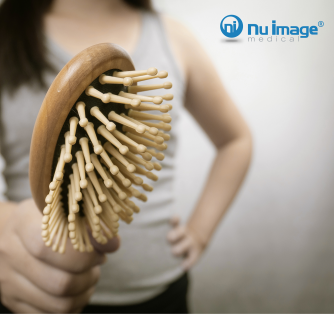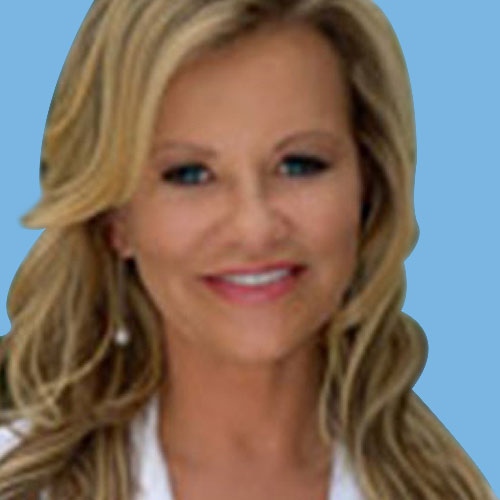Menu
Weight loss
Hormones
Sex
EXPLORE
MEET NU IMAGE MEDICAL
TREATMENTS
MEET NU IMAGE MEDICAL
TREATMENTS
MEET NU IMAGE MEDICAL
Cultural Influences on Hair Retention


There are a lot of misconceptions floating around society about baldness, thinning, or an embarrassing loss of hair. Some think only aging men suffer from baldness, or those who are undergoing serious medical treatments have to deal with their falling out. On the contrary, people of all ages, backgrounds, and gender can suffer from a significant loss of hair. There are different terms for what occurs when people start to lose their hair, and while many people simply call this unfortunate event hair loss, the medical term is alopecia.
Defining Alopecia
There are different types of alopecia, such as androgenetic alopecia referring to male or female pattern baldness. In men, this condition is characterized by a thinning around the crown and a receding hairline. Women experience loss differently, starting at the part line but spreading out around the head. The severity of the loss is categorized by how widely the part increases and how see-through areas around the scalp become. While it is normal for people to lose between 100-150 hairs a day, a consistent loss that leads to balding is not normal. Conditions of alopecia can be brought on by a number of factors, such as poor diet, medication side-effects, stress, and genetics. Even though the same factors impact loss, there are some ethnicities and cultural factors that can make a difference with balding or thinning.
Three Ethnic Hair Types
Researchers have three common classifications for hair: African hair, Asian hair, and Caucasian hair. Even with these hair types, there are key differences in the groups themselves. For instance, within the Asian hair group, Japanese men experience a more significant loss that other Asian men. However, as a whole, Asian hair has a lower density and grows more quickly than other hair types. It also has a perpendicular growth pattern on the scalp. On the other end of the spectrum, Caucasian hair has the highest density among the three hair types and slightly slower growth rates than the Asian group. African hair has the slowest growth but yet is denser than Asian hair. It also tends to naturally twist around as it grows, while Caucasian hair grows slightly curved. The Caucasian group has a higher rate of loss, though Afro-Caribbeans are a close second. The lowest rate of loss belongs to Asian men. Certain countries have also been ranked according to loss, with the Czech Republic taking first place with thinning hair problems. Other European countries that rank within the top five are Spain, France, Germany, and the United Kingdom.
The Cultural Perspective
There are undeniable cultural influences on how hairstyles, colors, and length are perceived. Consider how many of the past American decades are remembered. You may be thinking of that big hairdo you wore during the 70s or the hippie look that was less work. Remember the flat-top, the mullet, or bowl cut? Looking back, you can associate periods of time with specific hairstyles and even colors. Madonna made bleach-blonde a popular choice among adoring fans and those who wanted to be rock-star beautiful. These styles were associated with Caucasian styles, but there are African-American styles that are culturally influenced as well. Hair is a way for this ethnicity to showcase their personality and connection to the ancestry. Black women use hair wraps, braids, and even the Afro to portray the evolution of black culture. While these styles are meaningful and create connections to their culture, they are also highly damaging to the hair.
The Impact of Following Cultural Demands
If you aren’t careful, the way you style your hair, the chemicals that you put on it, or the harsh nature of your styling or hair care products can result in alopecia. However, many people choose to follow what is culturally-acceptable or desired rather than doing what is right by their hair. Going against the status quo may not be ideal for your social life, but the impact of significant thinning, balding, and loss is more damaging. Alopecia can be devastating to an individual, especially when considering the social aspect. Cultures have long praised hair as the most desirable natural adornment, helping people feel beautiful and self-confident. When this beauty is perceived to be gone, depression, anxiety, stress, frustration, and anger are just a few of the emotions commonly experienced. This change in how you perceive yourself may be felt across your social circle, affecting your identity and sense of belonging.
At some point, you may experience a situation with loss that is abnormal and severely impacting your ability to style or maintain your hair. The good news is that there are treatments available to help stop loss and restore growth, no matter what the underlying conditions may be.
Nu Image Medical® offers a new and futuristic approach to achieving optimal health and wellness. The company has been a weight loss, anti-aging and wellness provider since 2004 and offers medically supervised programs for medical weight loss, peptides, erectile dysfunction, scream cream, and hair loss (NuDew)
This article is for informational purposes only and does not constitute medical advice. The information contained herein is not a substitute for and should never be relied upon for professional medical advice. Always talk to your physician about the risks and benefits of any treatment. Nu Image Medical may not offer the medications or services mentioned in this article.
